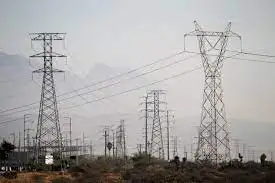EuropeÂ’s next green thing: Ocean power
Ocean power — using the energy from waves or tidal flows to produce electricity — is quickly coming of age as a viable green resource that could help meet ambitious global targets to reduce greenhouse gases and dependency on fossil fuels.
European and North American power companies such as Canada's Emera and Germany's RWE are spending millions to fund wind and tidal projects. This investment has led to a new generation of more efficient technologies, with dozens of prototypes expected to be ready for commercial deployment within the next five years. "There's huge interest in both wave and tidal technology," says Thomas Boeckmann, clean tech analyst at market research firm StrategyEye in London. "It's gaining a lot of attention from energy companies, which will be able to offer financial backing and technical expertise to these startups."
It's no surprise utilities are keen to harness marine power. According to Britain's Carbon Trust, a government-funded research and advisory group, the world's oceans have the capacity to produce as much as 4,000 terawatt hours per year of electricity — enough to power Britain 10 times over.
Of course, getting to that point is a long way off. Analysts expect Europe to have between 2,000 and 5,000 megawatts of installed capacity from wave and tidal farms by 2020. That's equivalent to between four and 10 coal-fired power plants.
The growth potential is already driving investment. Dublin-based OpenHydro, for instance, has raised more than $80 million from energy firms and venture capitalists since 2005 to develop a new type of turbine that lies on the seabed and rotates to produce electricity as the tide rises and falls. Among its investors is Canada's Emera, which holds 7% of the company.
OpenHydro already has a 250-kilowatt prototype in the water off the coast of Scotland and plans to install a 1-megawatt plant in Canada by 2009. Chief Executive Officer James Ives says the biggest hurdle for marine power is persuading investors that it can consistently produce electricity. "You have to show that the technology is reliable even in the worst conditions," Ives says.
Analysts believe partnerships with utilities could help marine energy companies overcome these problems. For one thing, traditional power firms have vast experience in building underwater power cables and gas pipelines. Deep-pocketed partners also could help shorten the gap between research and development and commercialization of marine technologies. "Cooperation (with utilities) is important because it provides a cash injection that shows power companies are taking the sector seriously," says Stephan Wyatt, the Carbon Trust's technology acceleration manager.
That's certainly the hope for Britain's Wavegen. In 2000 the subsidiary of Germany's Voith Siemens Hydro installed the world's first wave power facility to be connected to the power grid. The unusual prototype taps the wind — the strong breezes generated by waves — to drive generators located in a seaside structure.
Wavegen is now working with the Basque Energy Board to construct a larger test plant on the northern coast of Spain, and a full commercial facility in Scotland should be up and running by 2010.
Of course, experiments with marine power have been under way for decades. One of the first plants in the world to harness tidal power, located in La Rance, Brittany, has been in operation since 1966. Built across the mouth of an estuary with powerful tides, the 240-megawatt plant produces electricity when tidal waters surge through turbines built into the barrier.
Today's experimental technologies tend to be more environmentally sensitive than those of yesteryear. Scotland's Pelamis Wave Power — formerly called Ocean Power Delivery — has created an eco-friendly "wave farm" off the coast of Portugal in partnership with Latin American utility Enersis (ENI) that already produces 2.25 megawatts of electricity.
Now Pelamis and Enersis, a unit of Spanish utility Endesa (ENDE.BE), aim to expand the site to 20 megawatts. Max Carcas, the company's business development director, also has targeted North America for growth and expects wave power to be a $10 billion-per-year industry by 2012.
To be sure, there are plenty of risks for marine energy firms. High startup costs, competition from other renewable sources, and investor fears over how well the technologies actually work could derail ocean power's move into the mainstream. What's more, generous and consistent government support will be essential to getting the industry off the ground. Marine energy currently costs at least 10 times as much as electricity produced by traditional sources. Countries like Britain and Spain offer subsidies for marine energy, but concerns that the support could be reduced has further confused investors looking to finance projects.
Despite this uncertainty, venture capitalists and power companies haven't stopped flooding the sector with cash in search of breakout technologies. Indeed, StrategyEye's Boeckmann predicts that thanks to growing investment, marine energy could constitute 20% of Europe's total renewable resources by 2020, compared with 40% from wind power.
That's good news for companies across the Continent hoping their projects could be the next big thing. Though wind and solar have snagged most of the investment to date in renewables, the tide is turning in favor of marine energy.
Related News

Solar changing shape of electricity prices in Northern Europe
BERLIN - The latest EU electricity market report has confirmed the affect deeper penetration of solar is having on power prices.
The Quarterly Report on European Electricity Markets for the final three months of last year noted the number of periods of negative electricity pricing doubled from 2019, to almost 1,600 such events.
Having experienced just three negative price events in 2019, the Netherlands recorded almost 100 last year “amid a dramatic increase in solar PV capacity,” in the nation, according to the report.
Whilst stressing the exceptional nature of the Covid-19 pandemic on power consumption patterns, the quarterly update also noted a…





